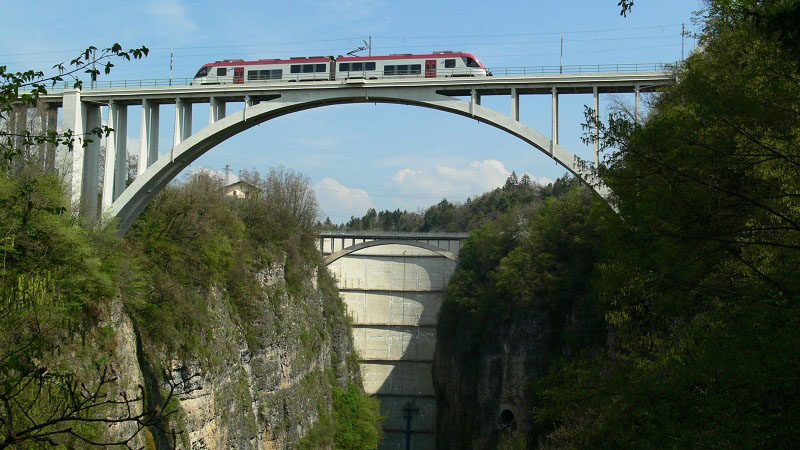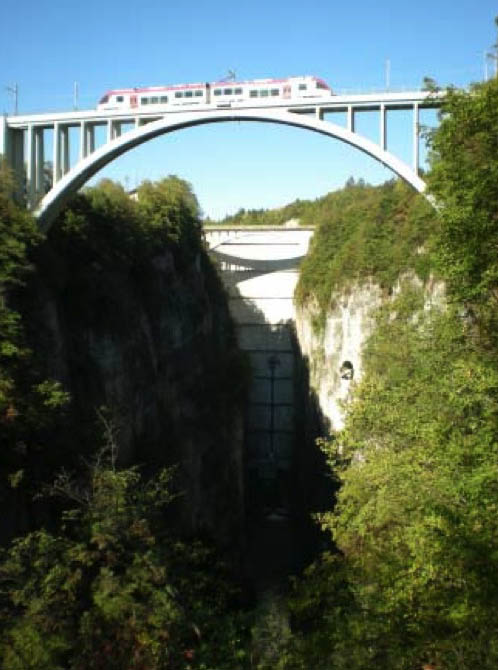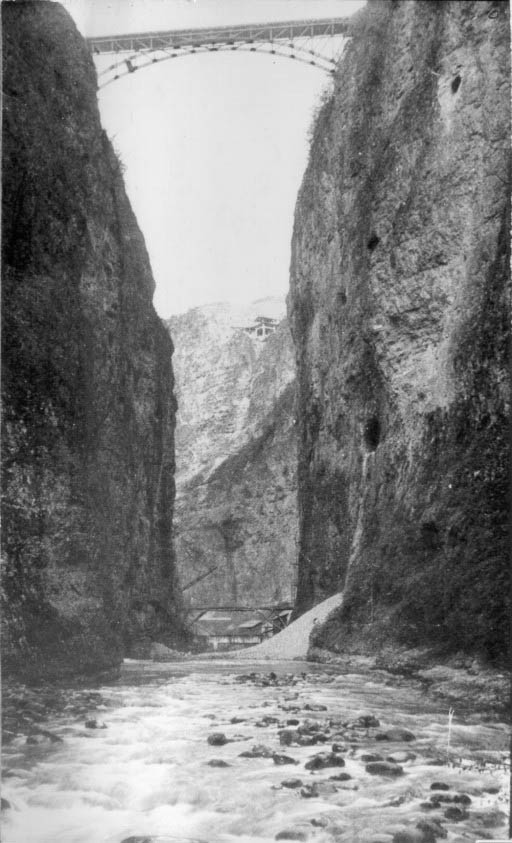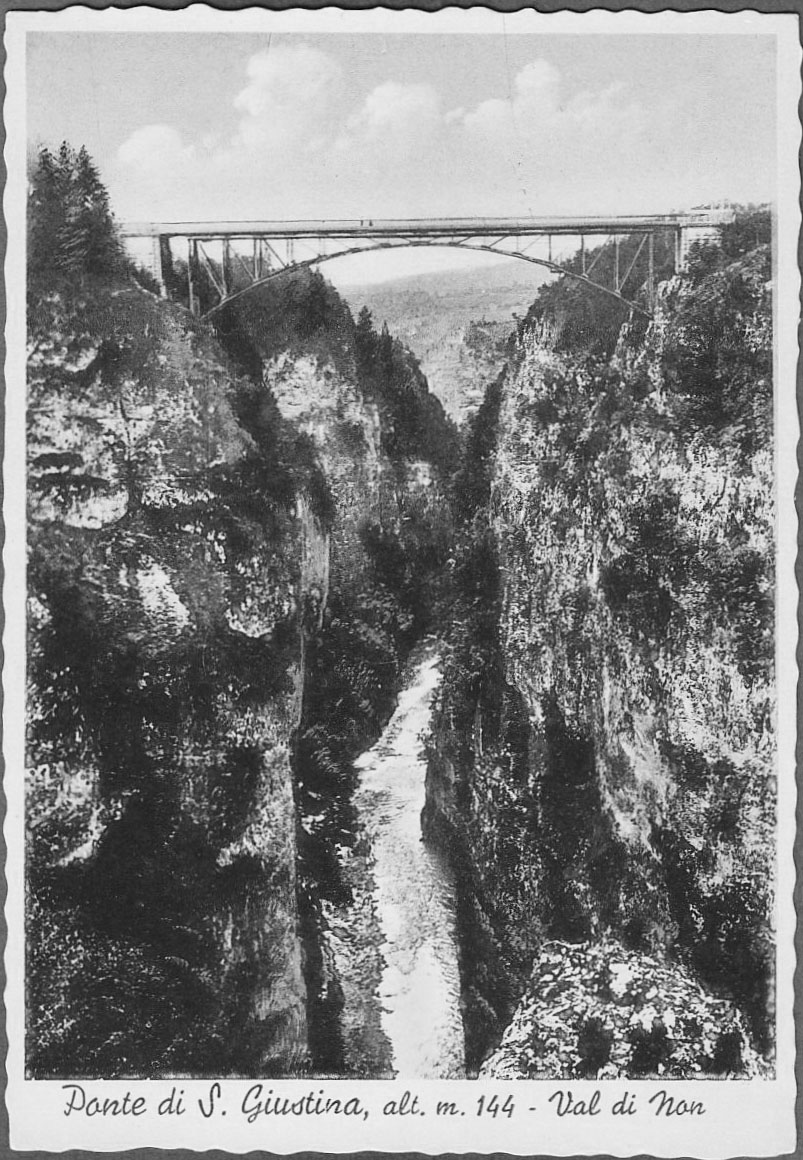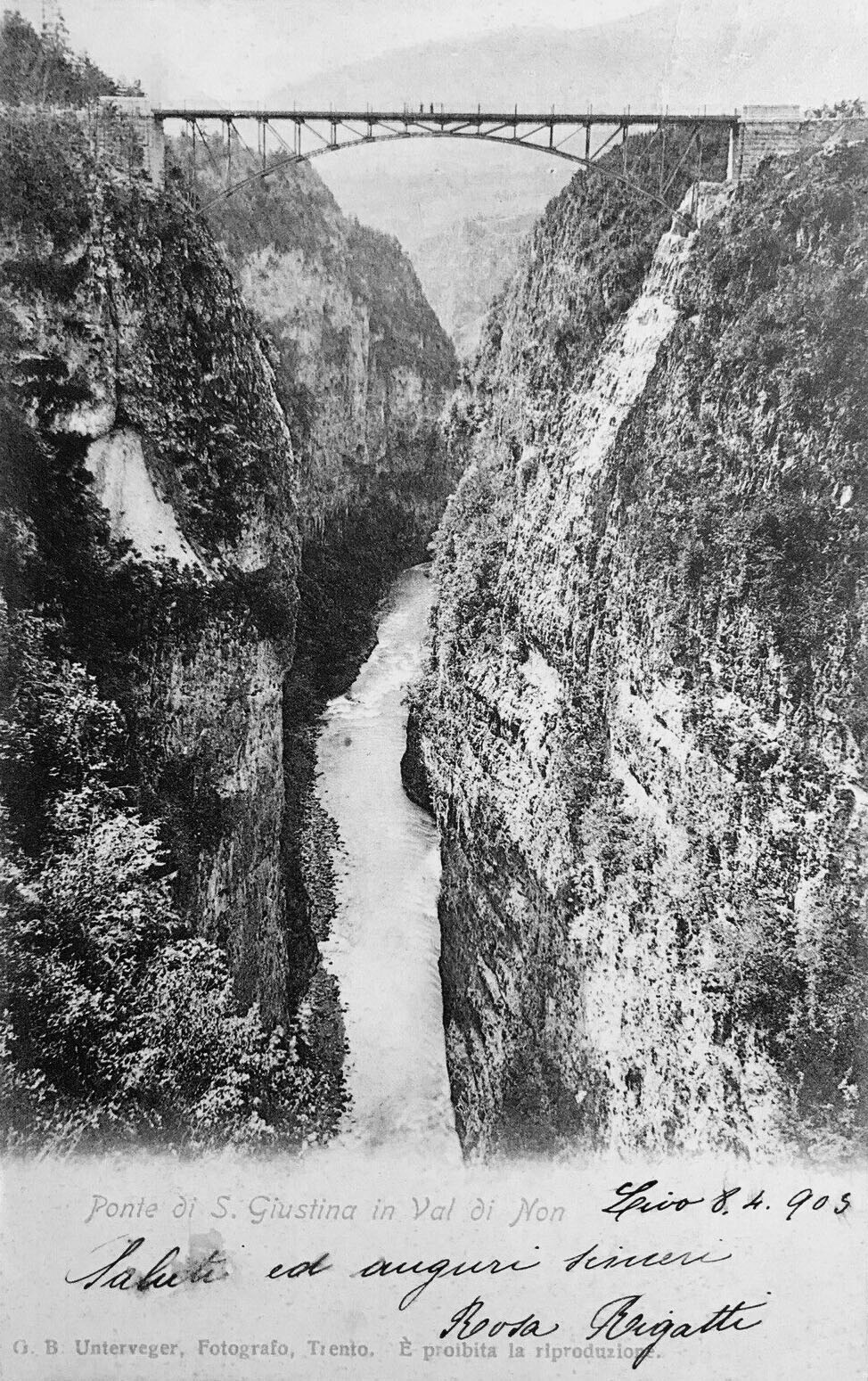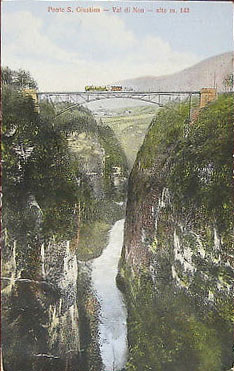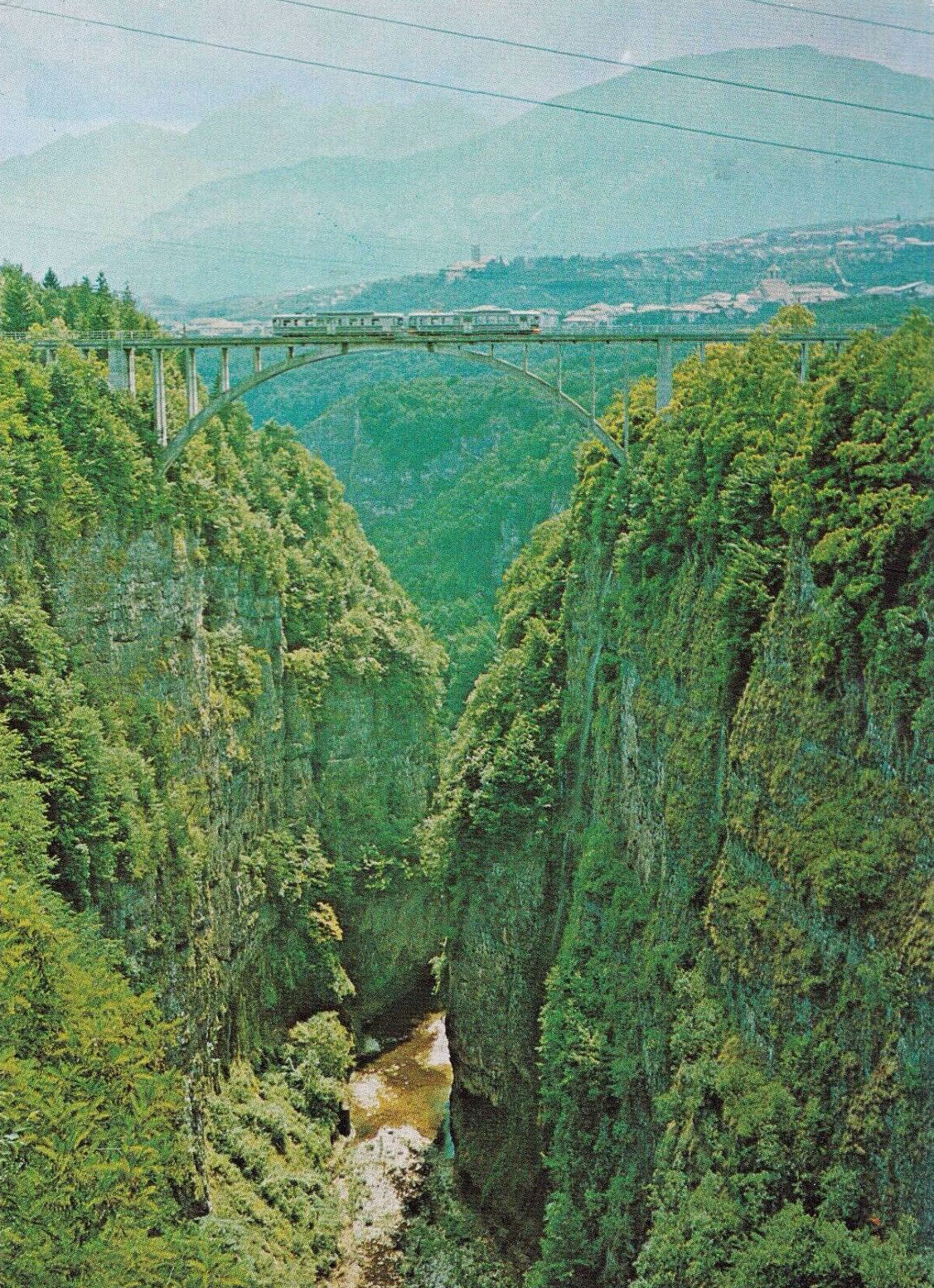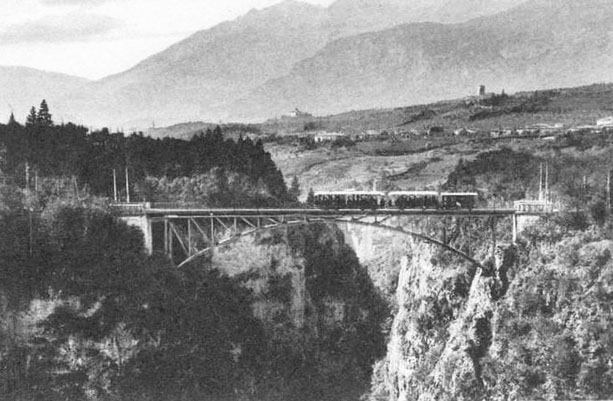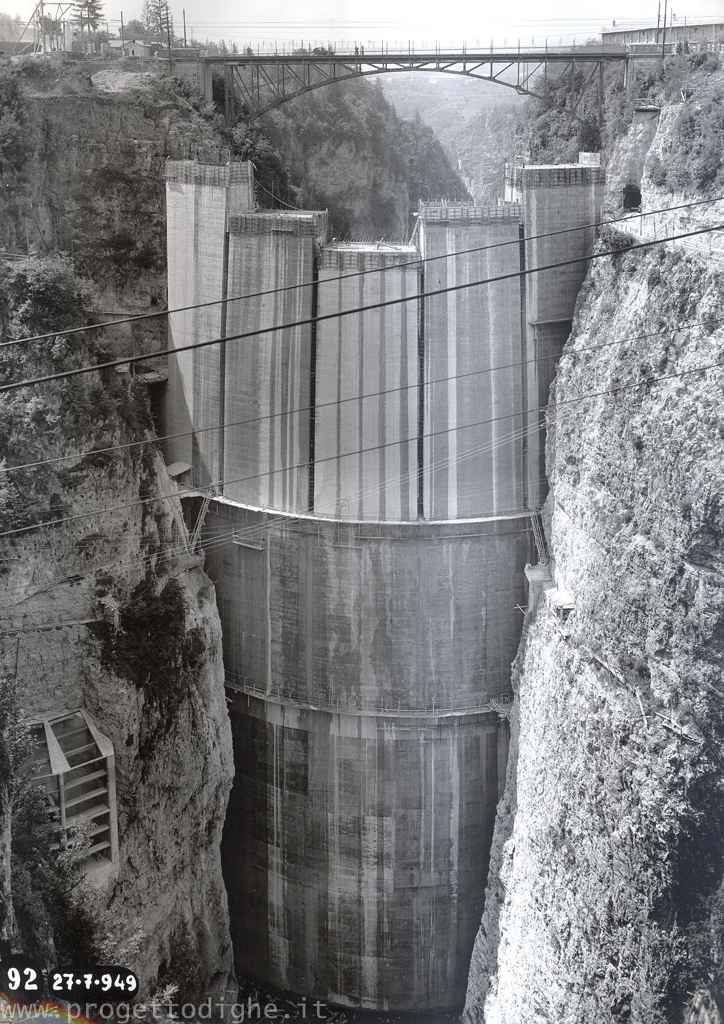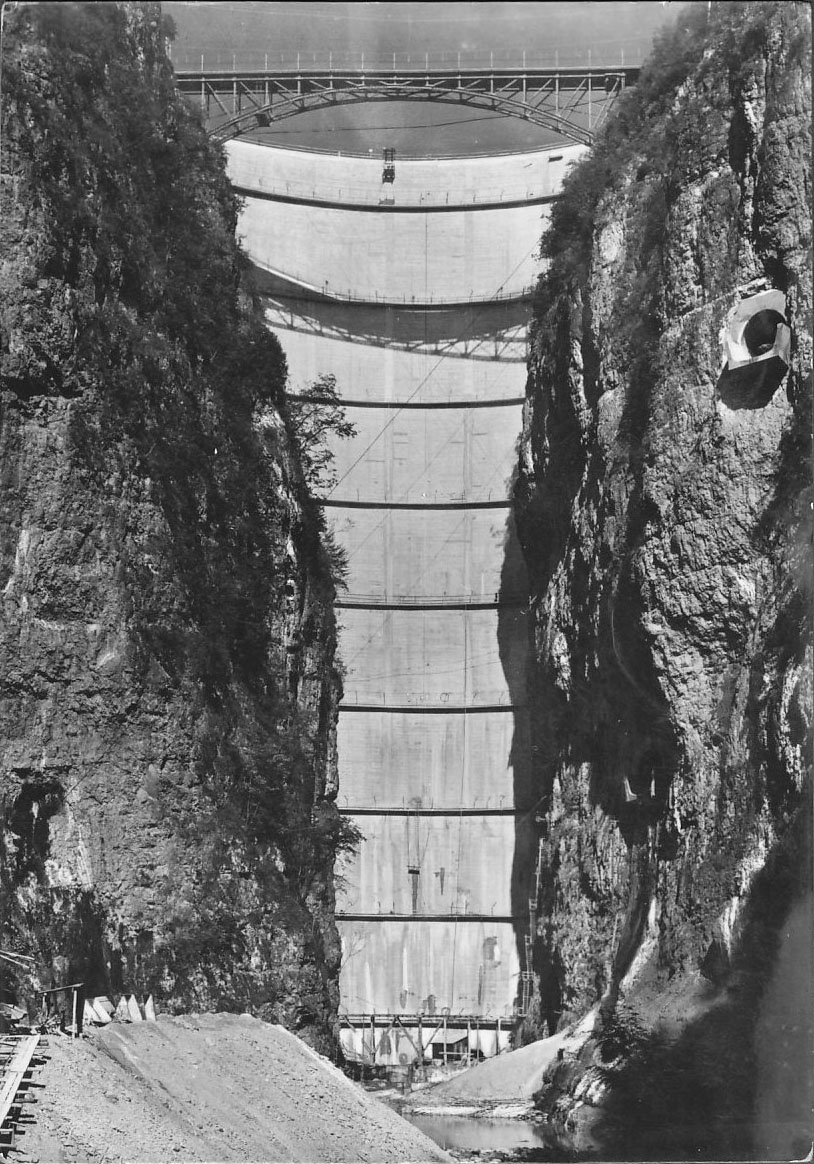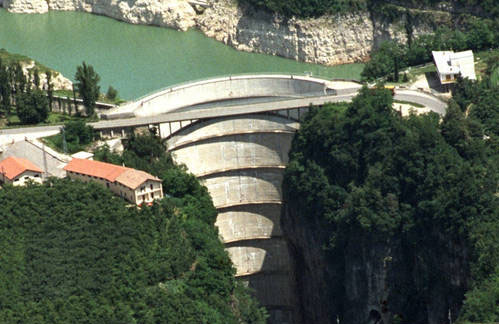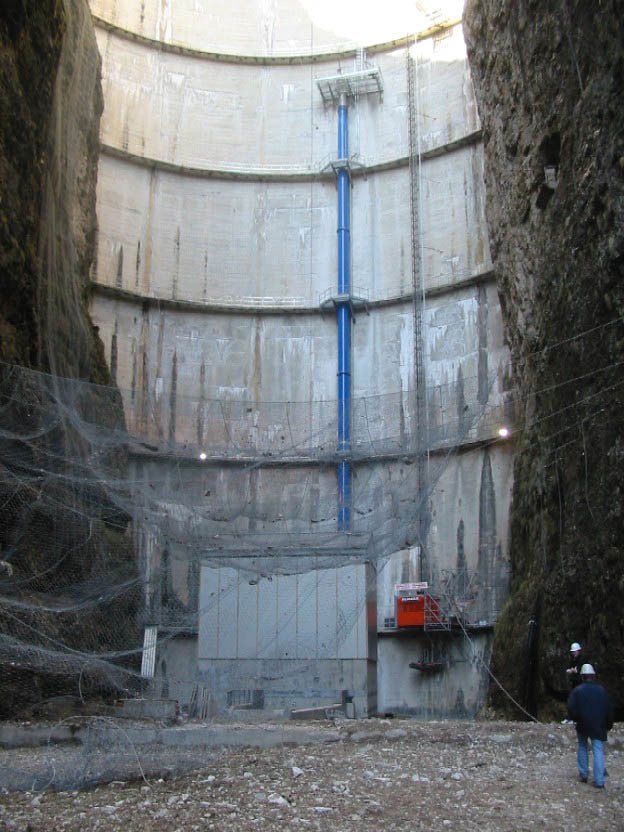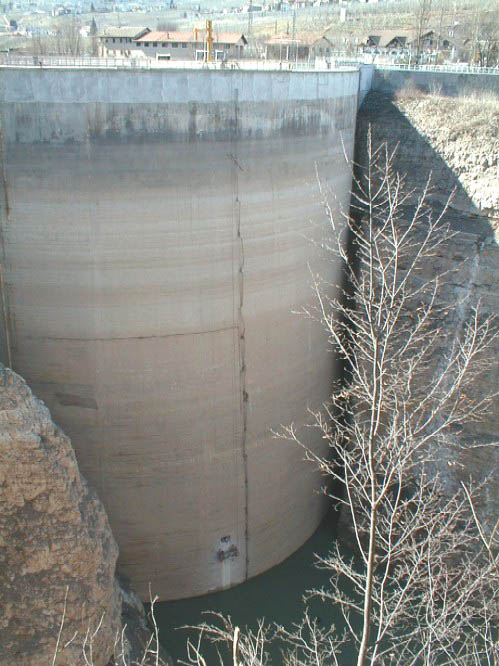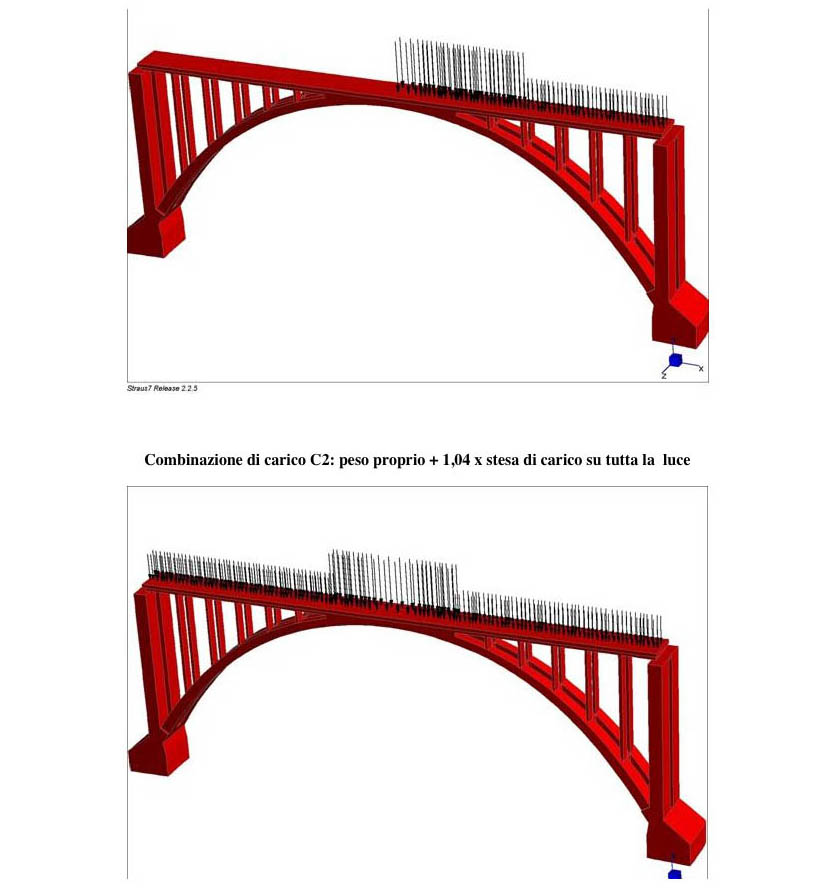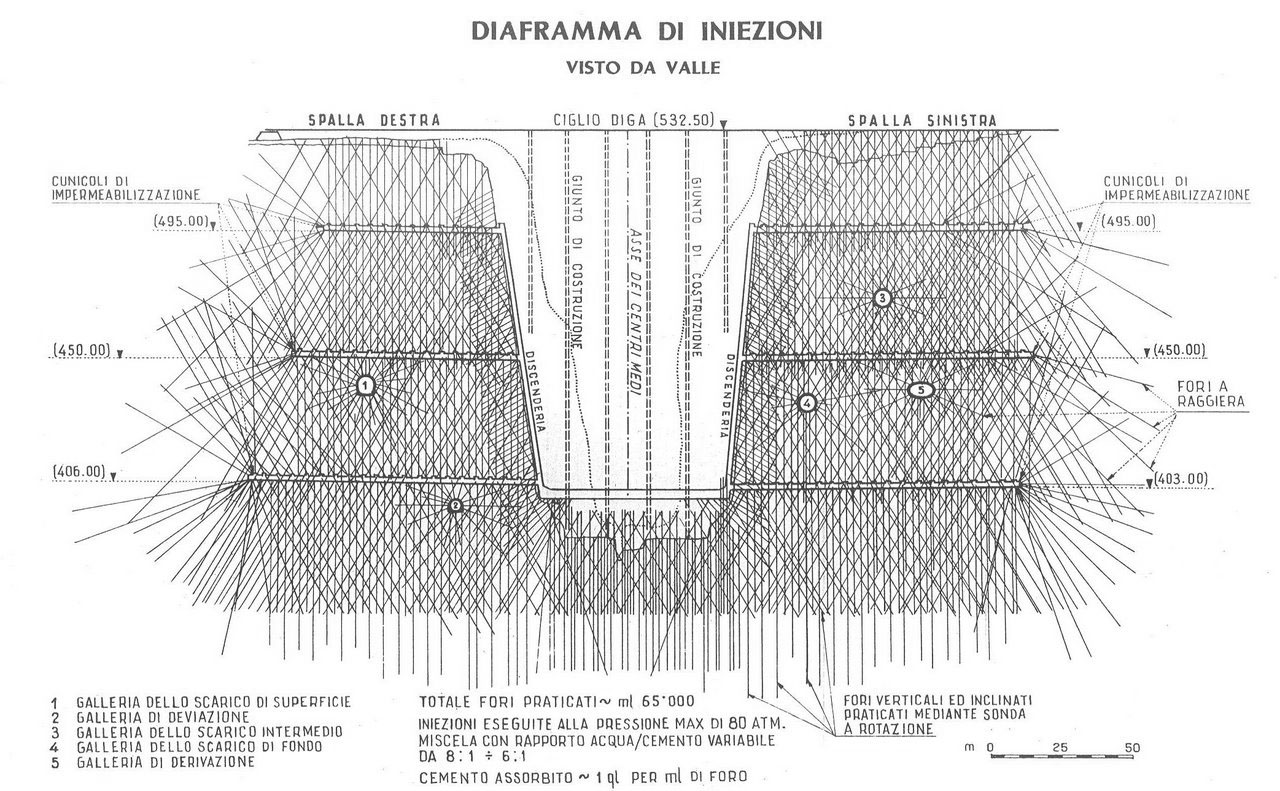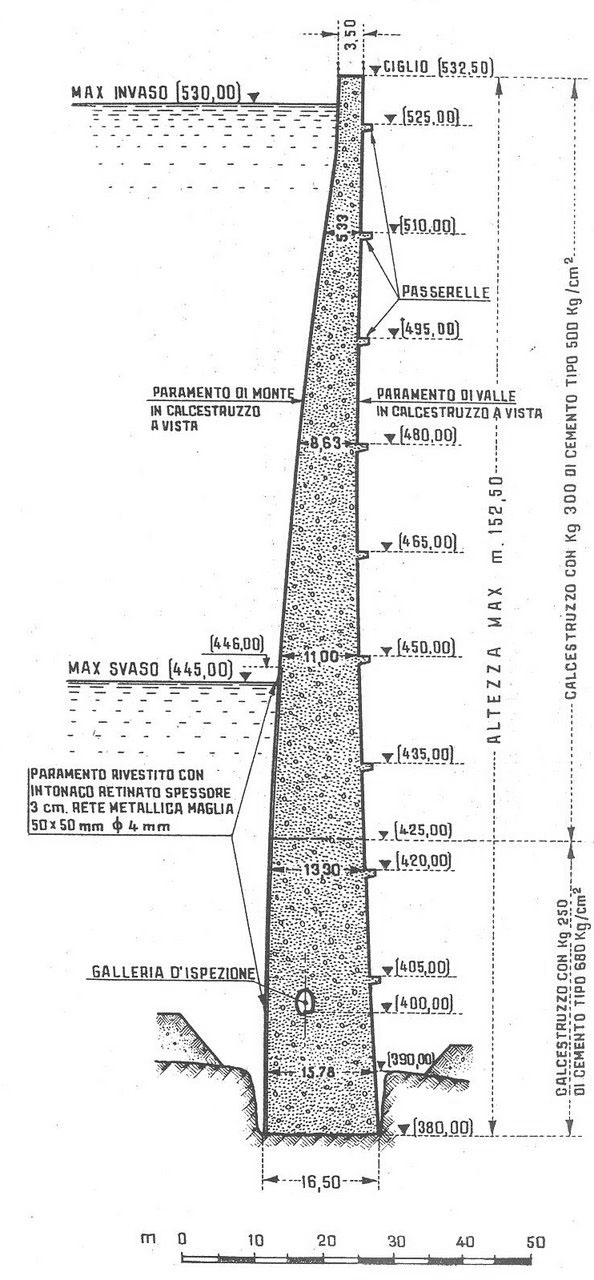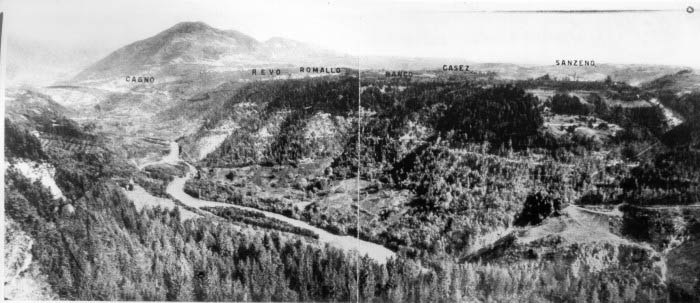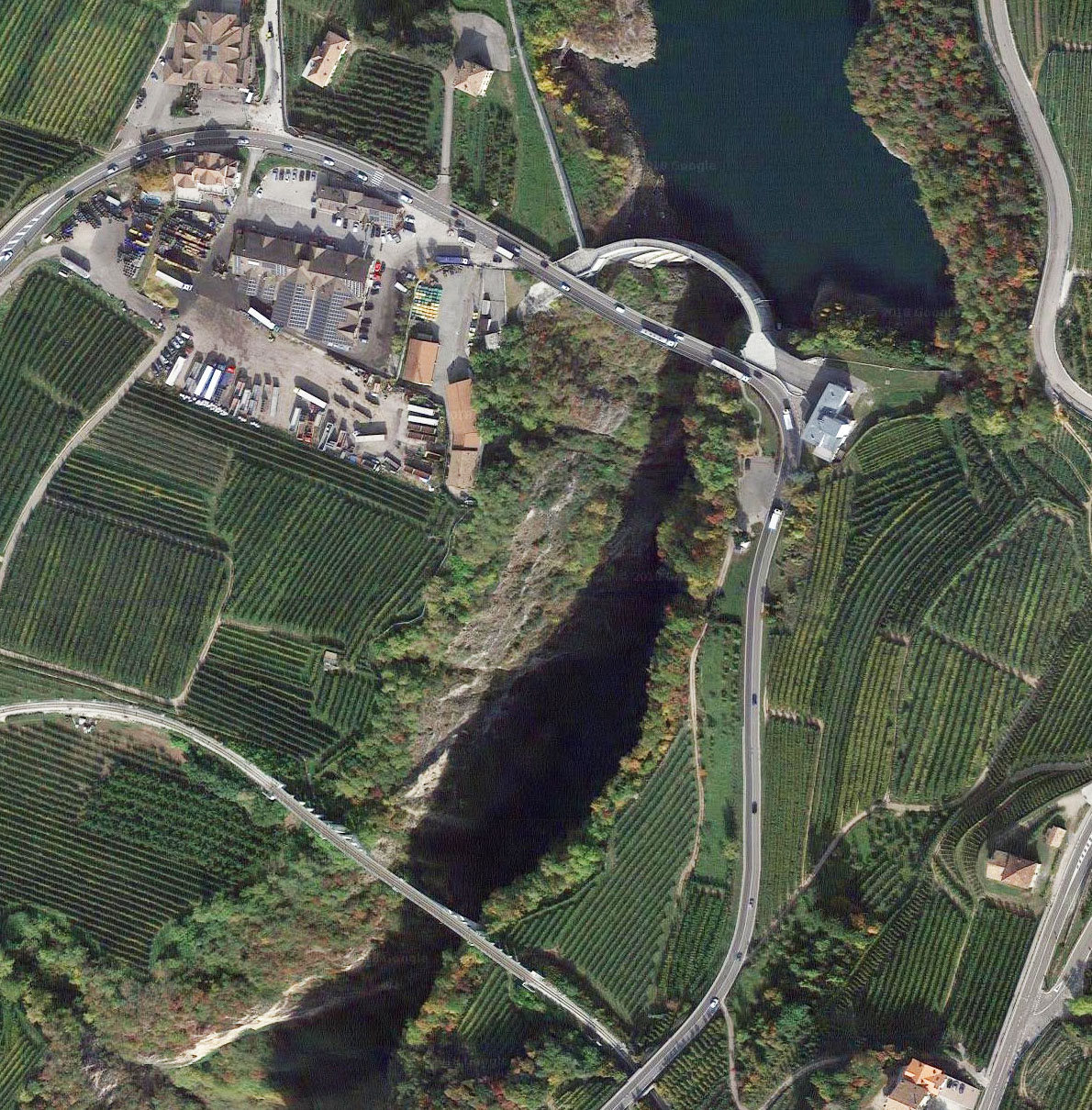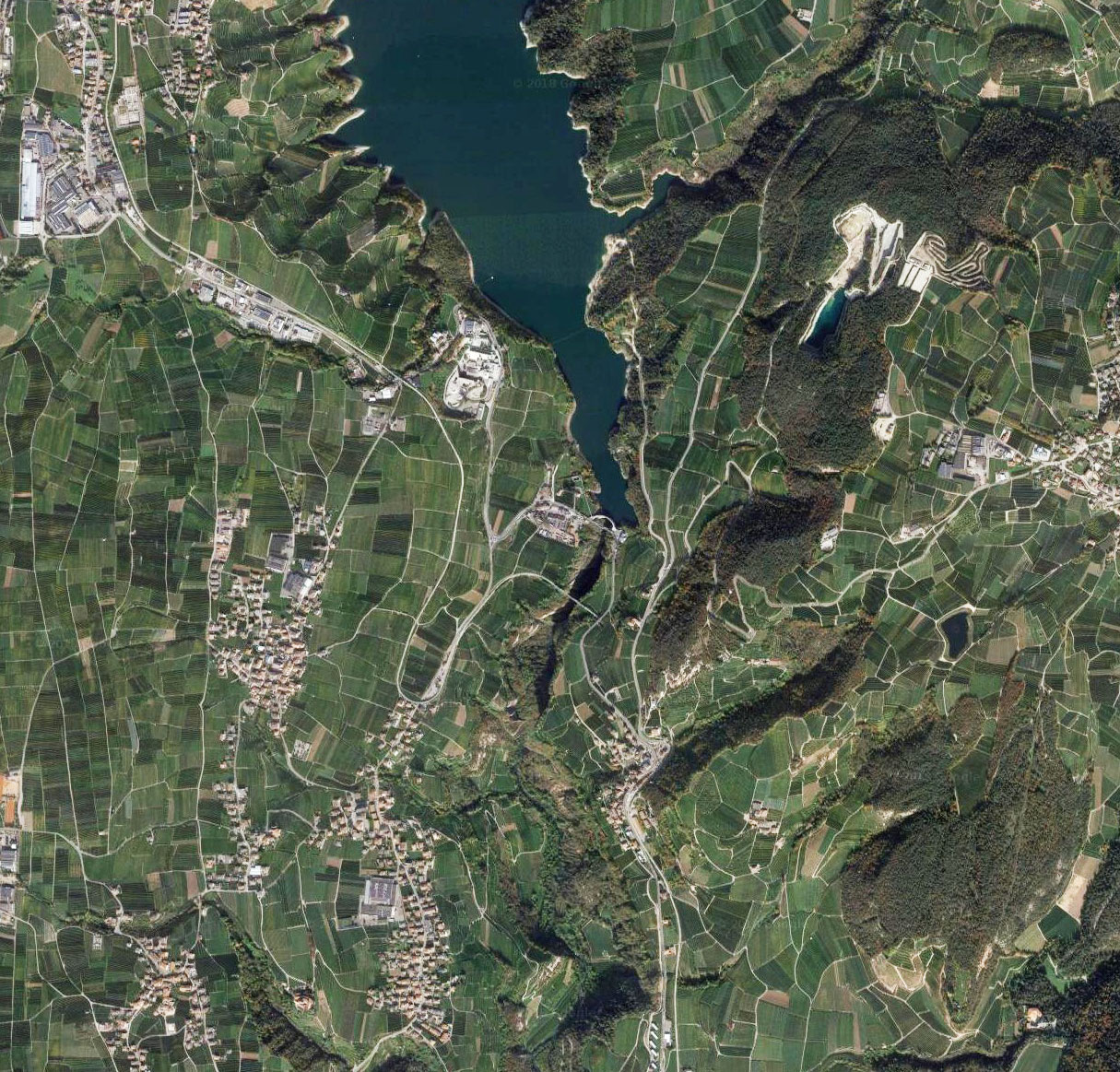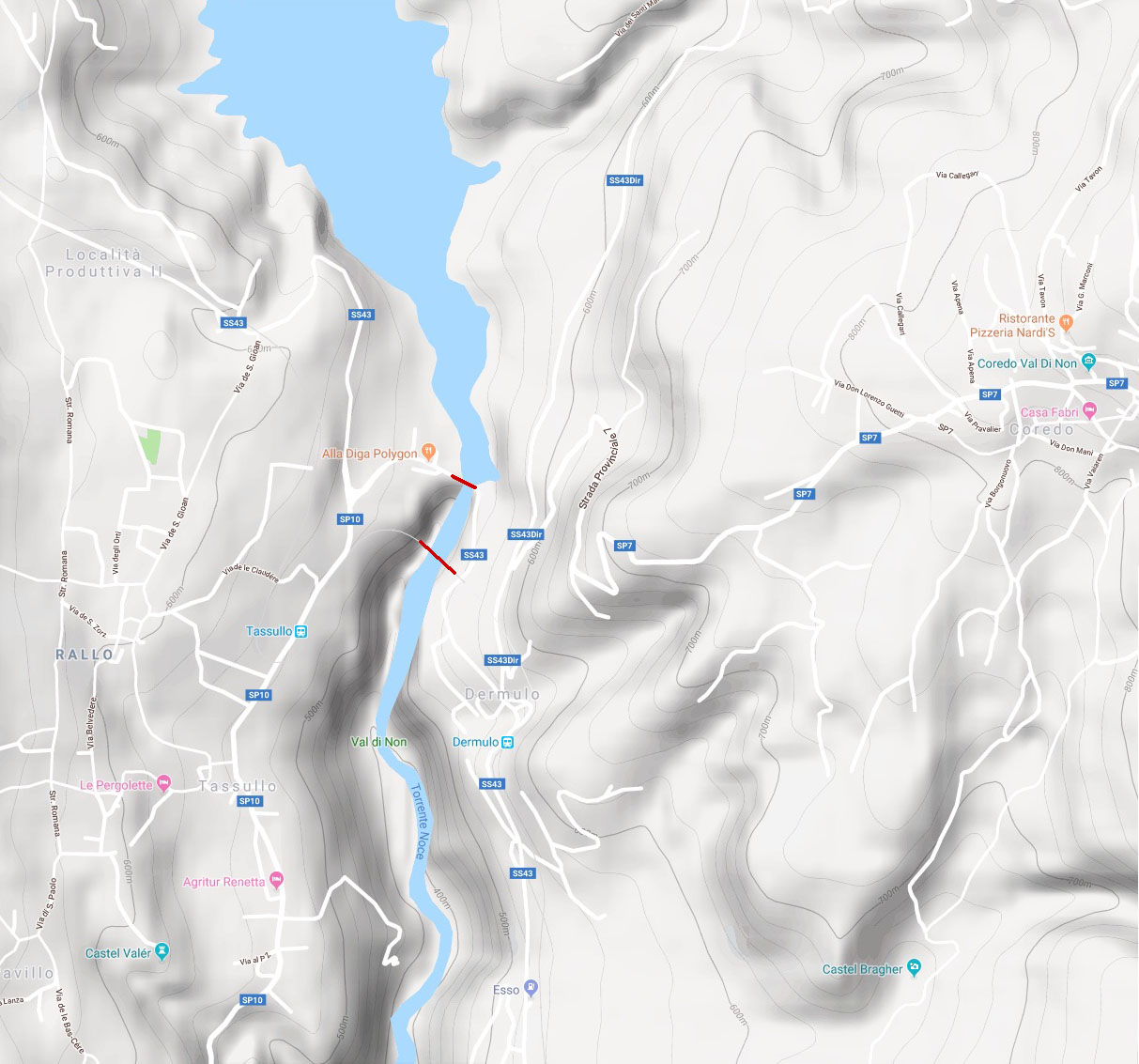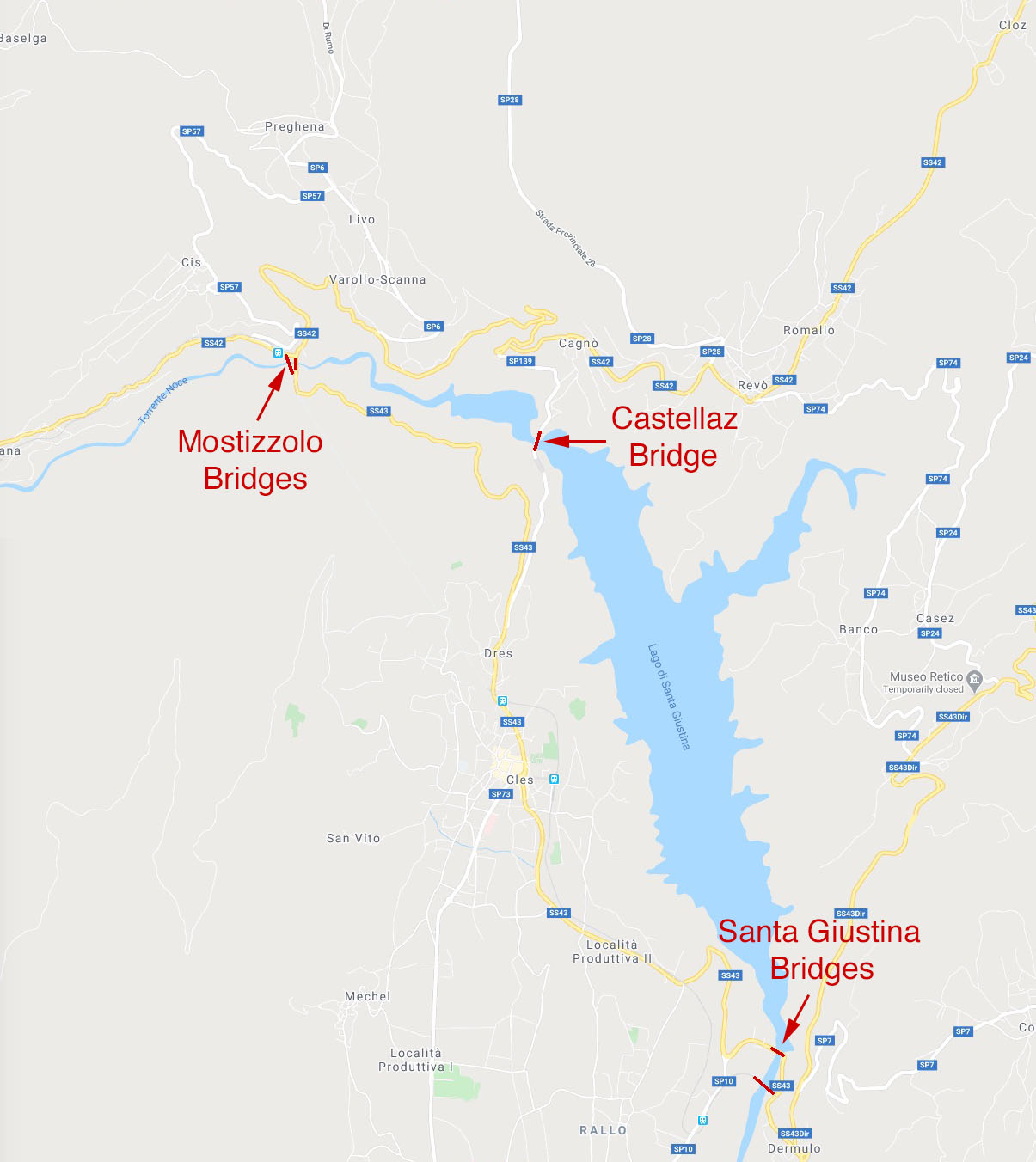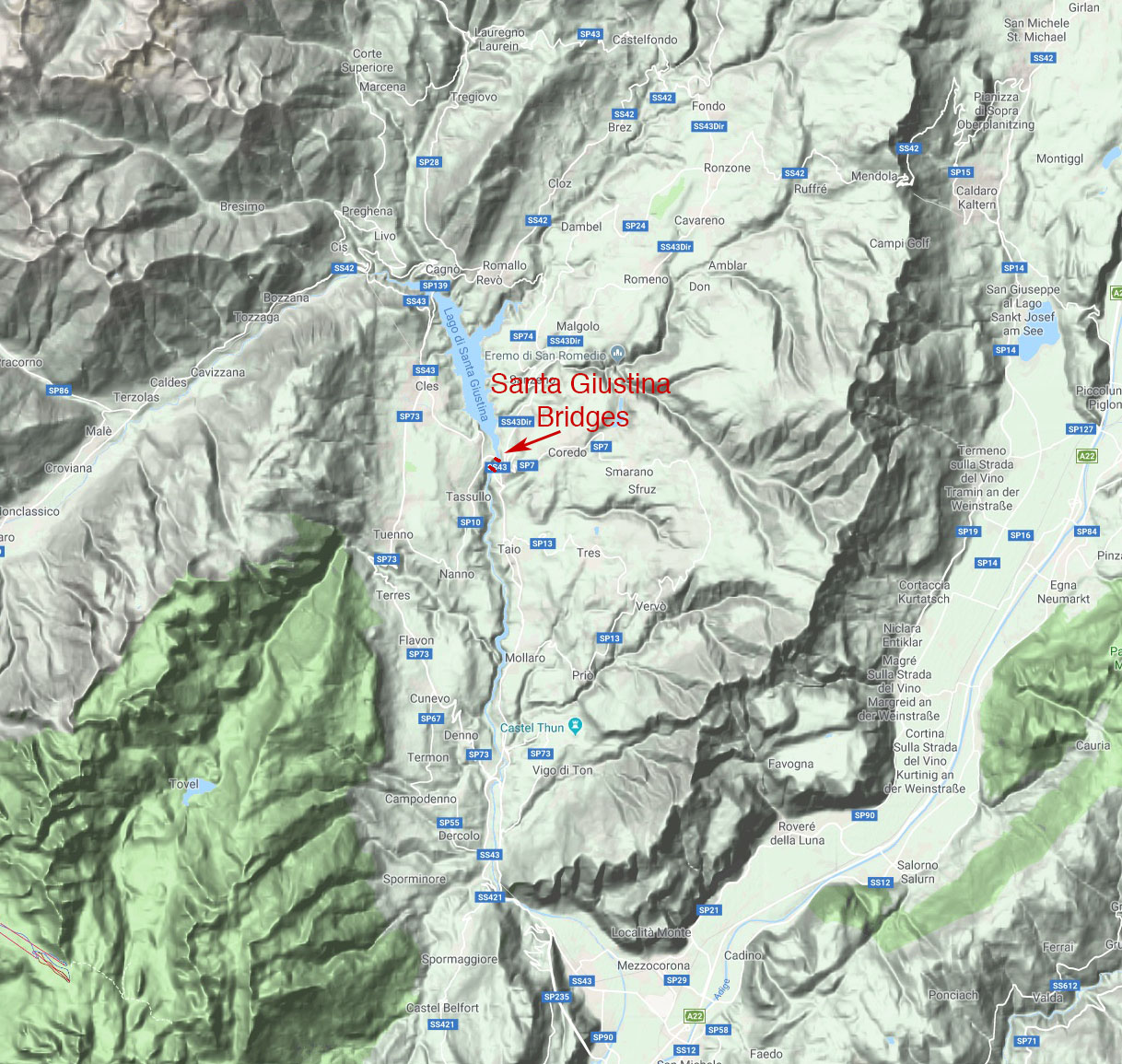Santa Giustina Railway 1959 Bridge
Santa Giustina Railway 1959 Bridge
Ponte Santa Giustina Railway 1959 Ferrovia
Dermulo, Trentino-Alto-Adige, Italy
472 feet high / 144 meters high
256 foot span / 78 meter span
1959
Image By V. Guaglianone.
Opened in 1909, the Ferrovia Trento-Malé is a narrow gauge railway in the Trentino-Alto-Adige region of Italy. Initially built by the Austrian state railways, control of the the line was transferred to Italian state railways after the Italian armistice treaty of 1918. The main line stretches 37 miles (60 kms) between Trento in the south with Malé in the northwest. At the time of its construction, a 16 mile (25 km) spur line was also built from Dermulo to Mendola. In 1934 this spur line was closed and the trains were replaced with buses. In 2003, a 6 mile (10 km) extension from Malé to Marilleva and the ski resort at Mezzana was finally opened.
It is at at Dermulo where the line crosses the deep gorge of the Noce River. The solid, rocky cliffs are perfect for an arch bridge. Rising 472 feet (144 mtrs) above the gorge, the first 1909 crossing of the Noce River entered the history books as the world’s highest railway bridge, a record it would maintain for 50 years until 1959 when a concrete replacement would open just downstream of it. The first span was a steel truss-arch with a length of 197 feet (60 mtrs) between the springing pins. A cableway was strung across the gorge to assist in its construction. Before the two halves of the arch could be closed at the crown, they were held back with stringers anchored more than 20 feet (6 mtrs) deep into the rocky ground. The underground anchorage was only accessible by a 25 foot (7.6 mtr) tunnel that was dug straight in from the cliff face. Above ground there was a stringer adjustment to counter the effects of temperature changes and keep the arch halves level until they could be joined over the river. A similar method was used for the construction of the first 1929 Navajo bridge in the U.S. state of Arizona.
In 1959 a new concrete Noce River railway bridge replaced the older steel arch located just in front of the Giustina dam that opened in 1951. The new dam flooded the Noce River valley for 5 miles (8 kms) upstream of Dermulo. Improvements to the railway at this time included a change to standard gauge track and the elimination of most street running sections. The 1959 arch bridge is reportedly a little higher than the original arch height of 472 feet (144 mtrs) but also longer with a central span of 256 feet (78 mtrs). It would remain the world’s highest railway bridge until the Mala Rijeka viaduct opened in 1973 north of Podgorica, Montenegro with a height of 650 feet (198 mtrs). Today Giustina still remains Europe’s highest railway arch bridge and the fourth highest European arch overall after the Tamina Bridge in Switzerland, the Caille Bridge in France and the Gueuroz Bridge over the Trient River in Switzerland.
Right next to the Giustina dam, at the site of the original steel arch bridge, a concrete arch bridge was built in its place to carry a two-lane road across the gorge. It is Europe’s fifth highest arch bridge. Another spectacular crossing on the Ferrovia Trento-Malé is located just beyond the north end of Lake Giustina where the side by side Mostizzolo rail and road bridges cross 280 feet (85 mtrs) and 262 feet (80 meters) above the river near the town of Cis. Both of these arches are replacements of earlier bridges. Yet another high bridge not to be missed is the spectacular Castellaz bridge, a concrete arch that cuts across the north end of Giustina Lake between Cles and Cis.
The original Santa Giustina Railway arch from 1890 that was replaced by a concrete road arch that now crosses right next to a dam.
The original steel railway arch was replaced by a concrete road arch bridge.
Image by StudioFrosio.it
Image by StudioFrosio.it
Image by StudioFrosio.it
The valley as it looked before it was submerged under 400 feet (122 meters) of water.
Santa Giustina Bridges satellite image.
Santa Giustina Bridges location map.
